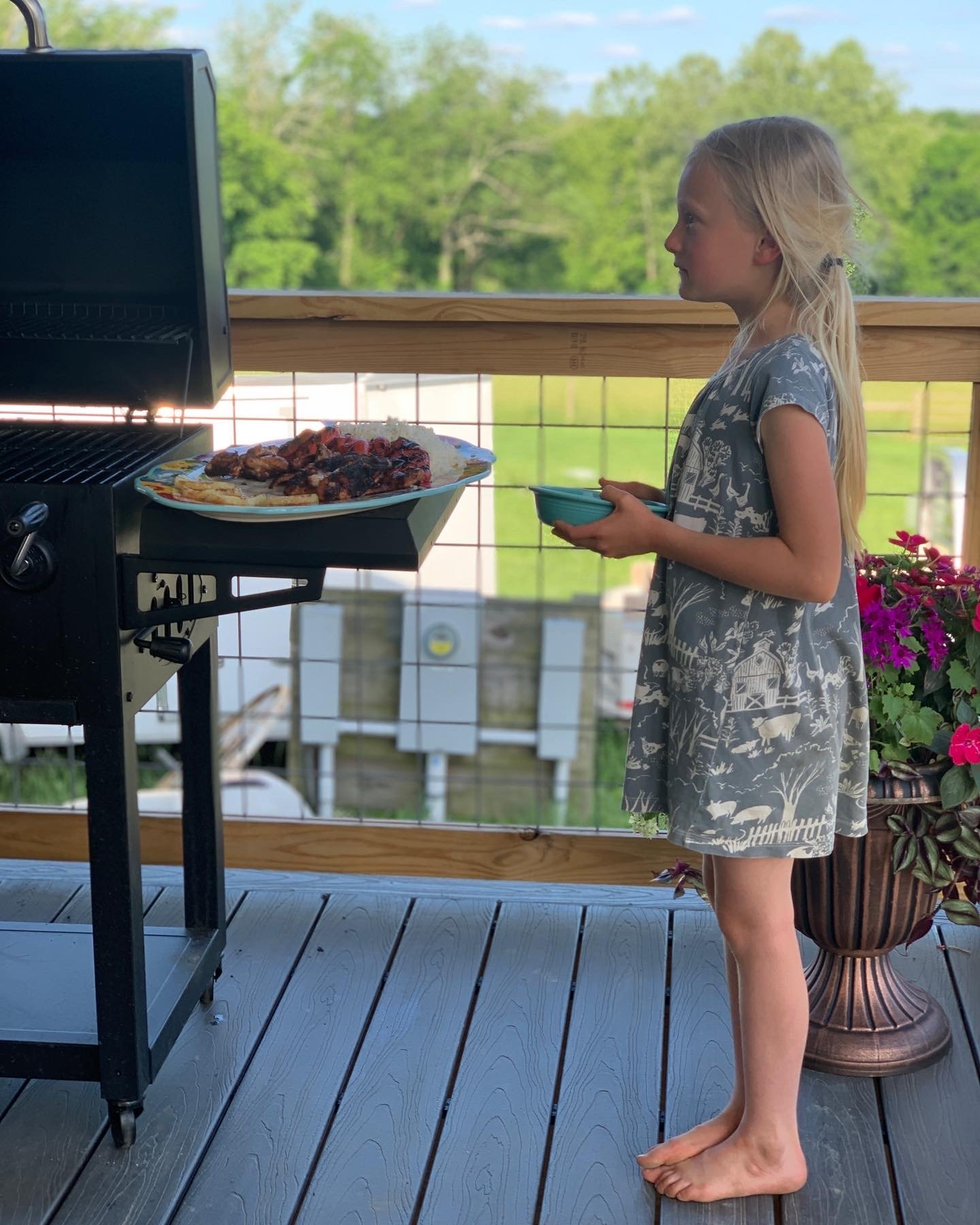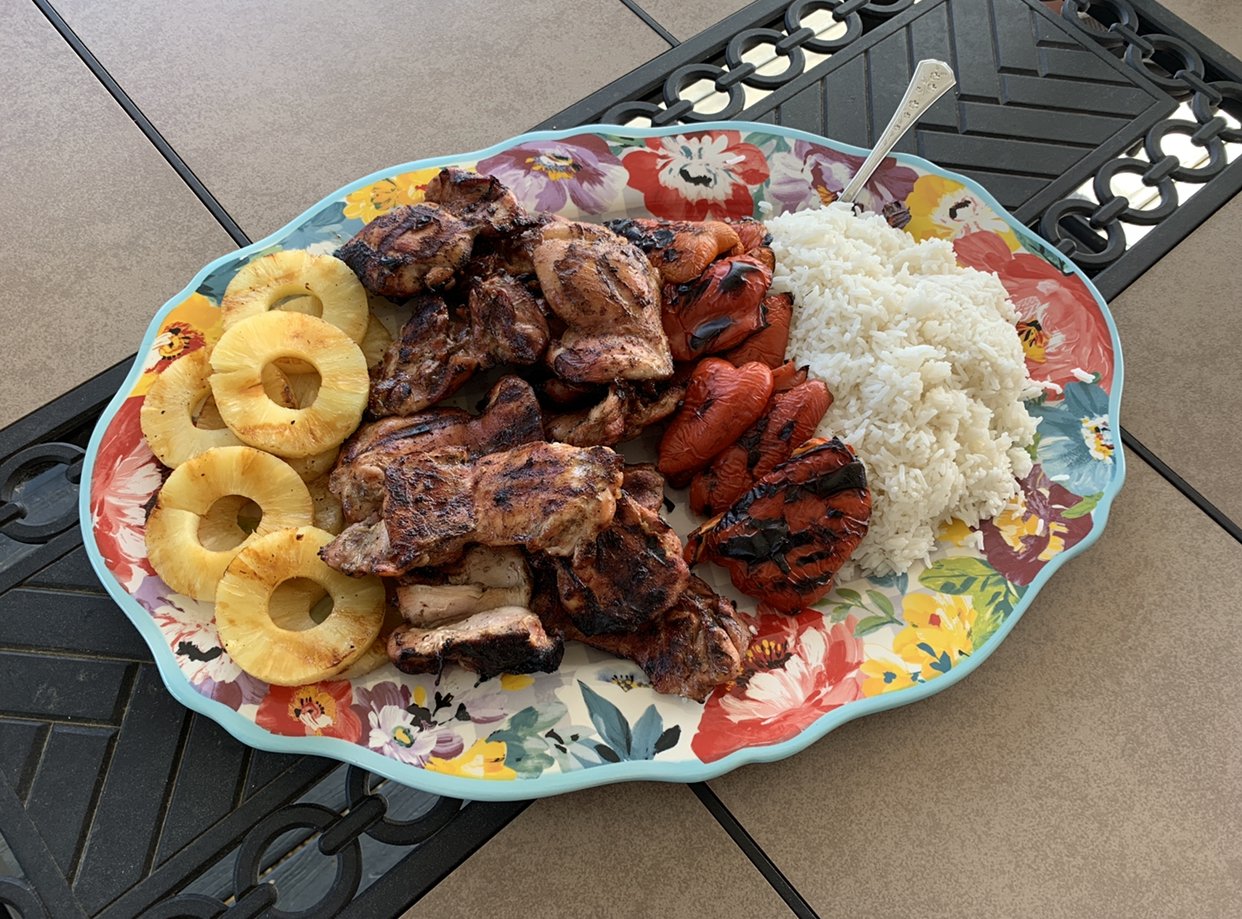If you’re in the Midwest - this is prime fresh veggies season!!!
Whether you grow your own garden or shop from your local farmers, this time of year there’s so much abundance happening around us.
I have a family of carnivores who expect meat at most meals, so we focus on pairing the meat we raised with lots of fresh fruit and veggie variety.
If your kids are hesitant to eat vegetables, my best advice is to just keep offering them. It can take multiple times before any of us realize we like something new or develop a taste for it.
You may also need to try a few different ways of serving them. My kids do not like cooked broccoli or carrots, but love them raw dipped in ranch or in veggie roll ups.
It’s also made a big difference for us when I let my kids get involved. If they participate in picking it out, cutting or cooking, mine are more likely to at least take a bite of something new or something they haven’t liked before.
And fresh local veggies are always going to taste better than the bland stuff from the grocery stores!
Here are a few of my favorite ways to add our homegrown meats plus a few extra fresh fruits and veggies into our days:
Add a pound of ground beef, chicken or pork sausage along with chopped onion, peppers, zucchini or yellow squash (or all of them!) into spaghetti sauce, serve over your favorite pasta.
Use spaghetti squash or spiralized zucchini noodles instead of pasta.
Tacos are a great way to add veggies! Start with a pound of our ground beef, chicken or pork sausage and add sliced radishes, onions, tomatoes, microgreens, cilantro, beans and even roasted potatoes. Serve over rice as burrito bowls or into burrito wraps.
Top breakfast eggs with tomatoes, arugula, microgreens or fresh herbs.
Pile your burgers with tomatoes, lettuce and microgreens. Add sautéed onions, peppers and microgreens to your brats. A bun isn’t even needed!
Spend a little time to wash and chop up a variety of fresh veggies. Offer them with hummus or ranch dip. We’re all more likely to actually eat them if there’s a big bowl of ready to eat veggies!
Once you finish chopping veggies and the kitchen is already messy - go ahead and cut up a watermelon and cantaloupe. It’s my least favorite thing, it always creates a giant mess, but it’s so worth it to have a cool, healthy snack ready.
Cream cheese stuffed peppers - this works with slices of sweet bell peppers, but our favorite is the small snack peppers. Cut the peppers in half, scoop out the seeds, add cream cheese and top with everything bagel seasoning.
Add a few sprinkles of sunflower shoots to a peanut butter sandwich.
Fun salads! One of our favorites is a BBQ chicken salad with grilled chicken or leftover shredded chicken, black beans, fresh cut from the cob corn, cherry tomatoes, cilantro microgreens, avocado, and sliced radishes.
Veggie Roll Ups - mix up a block of cream cheese, 1/2 cup of sour cream, your favorite seasonings and a mix of chopped veggies. Spread onto tortilla shells, roll up and slice into 1-2 inch rounds. We’ve added everything from shredded carrots, broccoli, cauliflower, sliced bell peppers, red onion, tomatoes, fresh herbs, greens (rainbow chard adds fun color). This is a great way to use up leftover bits of veggies.
If you have other favorite ways you like to add more fresh fruits and veggies into meals and snacks, please let us know in the comments!
Have you joined our email community? It’s the place to be for more simple recipes like these, plus first dibs on restocks and Monthly Meat Share openings. Add your first name and email below and join us!





